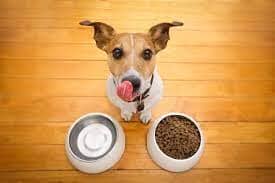Optimal Nutrition for Your Furry Friends: A Comprehensive Guide
Introduction
Every pet owner wants the best for their furry companions, and providing optimal nutrition is the cornerstone of ensuring a happy, healthy life for them. Understanding the complex world of pet nutrition can be daunting, but armed with the right knowledge, you can make informed decisions that contribute to the well-being of your pets.
The Importance of Proper Nutrition
Nutrition plays a pivotal role in the health, energy levels, and longevity of your pets. A well-balanced diet supports organ function, maintains muscle tone, keeps the coat shiny, and can prevent a variety of diseases and health issues. But what exactly constitutes "proper nutrition"?
Understanding Your Pet's Nutritional Needs
The dietary needs of pets vary significantly across different species, breeds, ages, and health statuses. Here are a few key components to consider:
- Proteins: Essential for growth, repair, and energy. Ensure the source is high quality and easily digestible.
- Fats: Provide energy, help absorb certain vitamins, and are necessary for healthy skin and coat.
- Carbohydrates: Source of quick energy and fiber, aiding in digestion. Though less critical for carnivorous pets like cats, they still play a role.
- Vitamins and Minerals: Support various bodily functions, including bone health, blood clotting, and antioxidant protection.
- Water: Often overlooked, but adequate hydration is crucial for all pets.
Tailoring Diets to Individual Needs
- Life Stage: Nutritional needs change as pets age. Puppies and kittens require diets rich in calories and nutrients to support their growth, while senior pets may need fewer calories but more of certain nutrients.
- Activity Level: Active pets have higher caloric needs than their sedentary counterparts.
- Special Diets for Health Issues: Pets with health conditions like obesity, diabetes, or kidney disease may require specialized diets.
Reading and Understanding Pet Food Labels
Pet food labels can be a source of confusion. Here's what to look for:
- Named Protein Source: Look for specifically named sources like "chicken" or "beef" rather than vague terms like "meat."
- Whole Foods: Ingredients should include whole foods. The closer to the top of the ingredient list, the better.
- By-Products and Fillers: Be wary of excessive by-products and fillers, which provide less nutritional value.
- AAFCO Statement: Foods meeting the Association of American Feed Control Officials (AAFCO) guidelines have undergone feeding trials or nutrient profile evaluations.
The Role of Supplements
While a well-balanced diet should provide all the necessary nutrients, some pets may benefit from supplements. Consult with a veterinarian before adding any supplements to your pet's diet.
Homemade Diets and Raw Feeding
An increasing number of pet owners are turning to homemade or raw diets. While these can provide fresh, whole-food nutrition, it's vital to research and consult with veterinary nutritionists to ensure these diets are balanced.
Optimal nutrition is a journey, not a one-size-fits-all solution. By understanding your pet's unique needs and staying informed about nutritional science, you can enhance their quality of life and enjoy many healthy years together. Always consult with a veterinarian or a pet nutritionist to tailor a diet plan that's best for your furry friend.
Visit our website. Let's embark on the path to optimal health for your pets, together.


